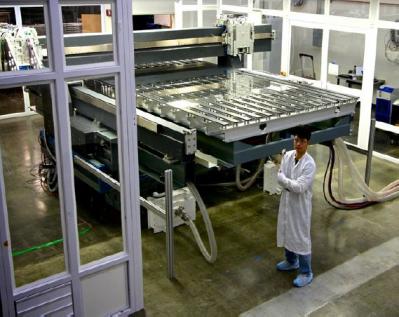Kateeva announced that it closed its Series D financing round - the company raised $38 million dollar, with Samsung venture Investment Corporation joining existing investors, including Veeco Instruments. Since 2008, Kateeva raised over $110 million.

After years of development, Kateeva finally unveiled their OLED inkjet systems in November 2013. During the unveiling, we discussed Kateeva's technology and business with Dr. Conor Madigan, the company's President and Co-founder. The company already deployed several R&D tools at customers sites in Asia, are are now focusing on commercial systems - including a Gen-8 system that can be configured as either mass production or a pilot tool.
Following the recent financing round, it's highly likely that Samsung is one of those customers that are trying out Kateeva's ink-jet systems (but I couldn't get confirmation on that). Kateeva expects to ship the first commercial systems towards the end of 2014, with "big demand for more orders in 2015". Kateeva YieldJET systems enable low-cost mass production of large-size and flexible OLED panels using precision ink-jet deposition.
Kateeva aims to first provide systems for the production of flexible OLEDs. YieldJET systems can be used to mass-produce flexible OLED thin-film encapsulation, one of the major technology hurdles towards flexible OLEDs. Veeco, which is one of investors in Kateeva, is offering complementary ALD-based flexible OLED encapsulation systems.
In the second stage, Kateeva aims to provide systems that can be used to mass-produce RGB OLED TVs. In the long term, the systems will be adapted to apply them to "other high-value manufacturing applications".
So basically, Kateeva's plan is to produce encapsulation systems for flexible OLEDs in the near term (forecasting sales of over $100 million per year). In 2020, they will start offering OLED TV printing systems - and this is a much bigger opportunity (over $1 billion per year).
Of course, Kateeva is not alone in developing OLED ink-jet printing systems. In March 2014, for example, Tokyo Electron announced that it is now accepting orders for the Elius 2500 OLED inkjet printing system, that can produce OLEDs on 8th gen glass substrates. Sumitomo also has P-OLED printing technologies (used by Panasonic back when they had an active OLED TV development project), and so does OLED Technologies & Solutions.
Disclosure: Kateeva is an OLED-Info sponsor

